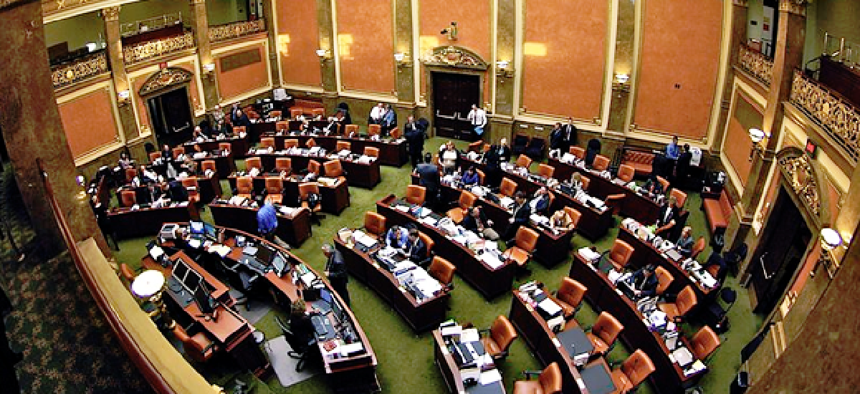Fiscal Note dashboard short-cuts Utah's legislative analysis

The Fiscal Note Agency Response System speeds analysis of the financial impact of proposed legislation.
Passing laws can be a labyrinthine process that is often complicated by an increasingly common requirement: the need to provide an analysis of proposed legislation’s estimated financial impact on government.
In Utah, the process was creating bureaucratic and workflow bottlenecks that strained the ability of the state’s Office of the Legislative Fiscal Analyst (LFA) to review new legislation affecting 120 agencies.
During each of the state’s six-week legislative sessions, LFA is called on to create a “fiscal note” that summarizes input from the state’s tax commissioners, various agencies and financial analysts on the effect each proposed bill would have on state revenue and expenses.
LFA prepares approximately 1,100 fiscal notes during each session in a process that involves collecting spreadsheets, commentary and analysis from an average of five agencies for each proposed bill. And time is of the essence: Fiscal notes must be filed within three days of a new bill’s introduction.
“We were able to meet those deadlines only about 60 percent of the time, so we were not doing well,” LFA Director Jonathan Ball said.
The office looked for ways to streamline the routing and analysis of fiscal notes and sought to clear bottlenecks by opening up the office’s legislative workflow to more collaboration. As a result, officials began developing the Fiscal Note Agency Response System last year. The custom system gathers projected expenses and revenue changes for each bill and stores the information online for fiscal analysts to review.
The system uses Microsoft’s .NET framework to transmit new bills to a Java-based web service. LFA analysts can view pending actions via a dashboard, and a countdown clock helps them prioritize their responses to requests.
The dashboard also shows previous responses and lets analysts link bills to specific funding codes and other offices that would affected by the proposed legislation. Fiscal analysts can communicate with other budget analysts more freely, often resulting in faster and more creative analysis.
“The basic inspiration came from looking at crowdsourcing and wikis,” Ball said.
Early on, officials realized that most of the bottlenecks were simple sequencing requirements. “We had supervisors reviewing notes and assigning them to analysts — that’s a bottleneck,” Ball said. “Then we’ve got the analysts reviewing and assigning to agencies — that’s another. So we started to ask: Why can’t we have all these things going on at the same time?”
The first step LFA developers took was to write scripts that would automatically assign bills to analysts and agencies, which cut down on the time spent waiting for analysts to make the assignment.
Now officials are exploring the next steps for its dashboard, which include expanding the reach of its analytical features. One area of focus is forecasting agencies’ ability to fund legislation and checking potential alternate sources of funding.
The office has also discussed ways the financial data it gathers might be made available to the public via an electronic platform. “This is the public’s data after all,” Ball said. “It would be interesting to have civic developers create something new we haven’t thought of yet.”
Overall, the project has significantly improved the state’s grasp on its financial posture, Ball said.
“I think the quality of our analysis is better, and we have more time to think about it and shoot ideas back and forth,” he said, adding that LFA’s on-time performance has improved from 60 percent to 98 percent.
“A lot of it has to do with the fact that we’re not spending time organizing paper,” he said. “We were spending so much time organizing this stuff before and not enough time analyzing it.”





